SOLAR ENERGY – A VIABLE ENERGY SOURCE FOR FUTURE
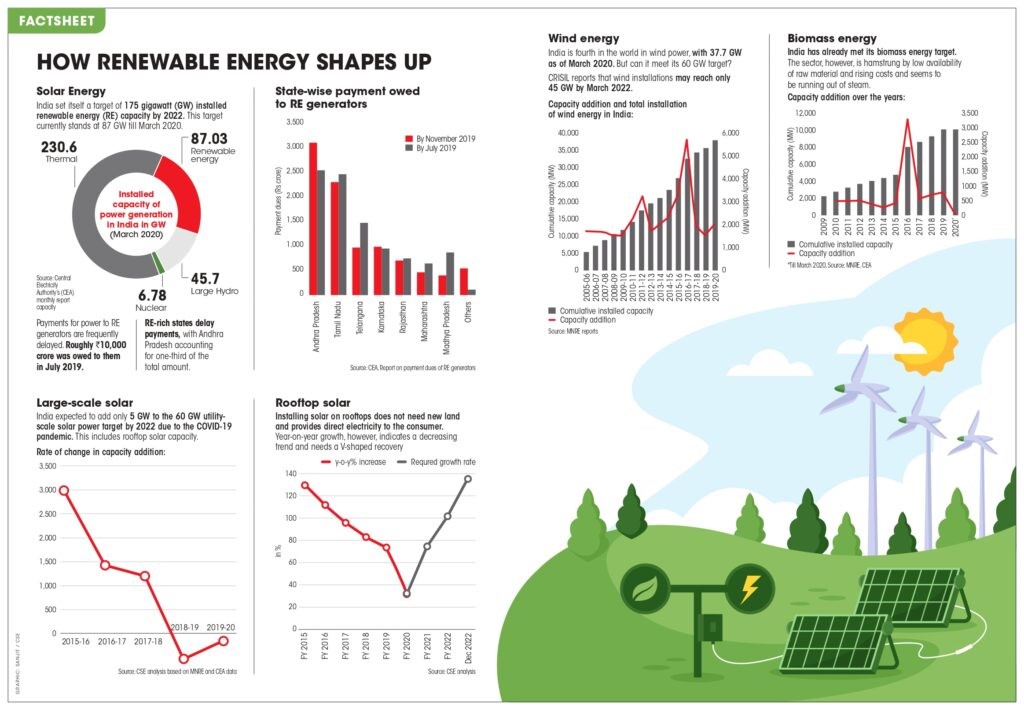
Context
- Minister of Power and New and Renewable Energy RK Singh stated that renewable energy sources have the potential to supply 65 percent of the world's total electricity by 2030 and decarbonize 90 percent of the power sector by 2050.
Key Details:
- The Sixth Assembly of the International Solar Alliance, ISA was held in New Delhi today. Speaking on the occasion, the Minister said the International Solar Alliance is steadfast in its commitment to Member Countries to make solar as the energy source of choice.
- He added, that ISA, through its Viability Gap Funding mechanism, provides a grant of 150 thousand dollars or 10 percent of the project cost per country per project, whichever is lower.
- The Minister further stated that the Assembly has decided to increase the range to 35 percent of the project cost, depending on the capacity and needs of the countries and their respective projects.
- Ministers from 20 countries and delegates from across 116 Member and Signatory countries are participating in the Assembly.
- The International Solar Alliance works with governments to ease solar deployment and promote solar power as a sustainable transition to a carbon-neutral future.
- ISA’s mission is to unlock one trillion dollars of investments in solar by 2030 while reducing technology and its financing costs.
- It promotes the use of solar energy in the agriculture, health, transport, and power generation sectors.
Why Solar Power Will Dominate the Global Energy Market?
|
it's the most abundant, renewable, reliable, and eco-friendly energy source available. Technological advancements and government incentives have fueled remarkable growth in the solar industry.
According to Fortune Business Insights, the solar market has achieved an 11% Compound Annual Growth Rate (CAGR) from 2020 to 2027, with an anticipated value of USD 223 billion by 2027.
|
Advantages of Solar Power Dominance:
Cost-Effective:
- While solar panels may have upfront costs, they require minimal maintenance and harness free energy from the sun once installed.
Environment-Friendly:
- Solar energy doesn't emit harmful greenhouse gases, making it an eco-conscious choice to combat climate change.
Reliable and Predictable:
- The sun's consistent energy production pattern makes it ideal for areas with unstable power grids or remote locations without grid access.
Innovation and Advancements:
- Ongoing advancements, like flexible and thin solar cells, enable integration into building materials, leading to self-sufficient structures capable of generating and even feeding excess energy back into the grid.
What's Next for Solar Power?
Solar power's future looks promising with these developments:
Bigger and Better Solar Panels:
- Expect more efficient and cost-effective solar panels, enabling greater energy generation.
Increased Storage Options:
- Solar power's main challenge, energy storage, will witness improvements with more affordable and efficient solutions, ensuring power availability even without sunlight.
Increased Accessibility:
- As solar technology becomes more affordable, more people will gain access to this renewable energy source, reducing dependence on traditional energy sources.
More Government Incentives:
- Governments worldwide are investing in renewable energy, and this trend is set to continue with more incentives to encourage solar power adoption.
Solar Power: Poised to Lead the Global Energy Market by 2040
- Solar power has been on the horizon for decades, but recent years have seen an unprecedented surge in its popularity. This renewable energy source is not just a trend; it's a vital part of our future.
Present solar energy status:
- As of December 2021, India’s cumulative installed solar capacity is 55GW.
- With grid-connected utility-scale projects contributing 77% and the rest from grid-connected rooftop solar (20%) and mini or micro off-grid projects (3%).
- Only about 50% of the 100GW target, consisting of 60GW of utility-scale and 40GW of rooftop solar capacity, has been met.
- Approximately 19 GW of solar capacity is expected to be added in 2022 (15.8GW from utility-scale and 3.5GW from rooftop solar).
- Even with this capacity addition, about 27% of India’s 100GW solar target would be unmet.
- On the current trajectory, the report finds, India’s solar target of 300GW by 2030 will be off the mark by about 86GW, or nearly a third.
Trends in the Solar Power Industry:
Several trends are shaping the solar power industry:
- Decreasing Costs: Solar panels have dropped by over 70% since 2010, making solar energy more affordable for homes and businesses. This trend is projected to continue, with solar power expected to become the cheapest form of energy by 2030.
- Community Solar Programs: These programs allow individuals and businesses to invest in larger solar projects, offsetting their energy usage. They make solar power accessible to those who can't install panels on their property.
- Energy Storage: Energy storage technology, particularly battery storage, is becoming more prevalent. It provides flexibility in energy usage and serves as a backup during outages. Advancements in battery tech make it a viable option for homes and businesses.
Projections for the Future
The future of solar power holds great promise:
- Increased Adoption: The International Energy Agency (IEA) predicts that solar power will provide almost a quarter of the world's electricity by 2050, up from the current 7%.
- Technological Advancements: Ongoing improvements in solar panel efficiency
- and energy storage will make solar power more attractive. Innovative technologies like floating solar panels and solar windows could further boost adoption.
- Government Policies: Increased government incentives, such as tax credits and rebates, are expected to make solar power more affordable. Policies promoting renewable energy and reducing fossil fuel use will drive demand for solar power.
India’s efforts and Government initiatives:
- One Sun One World One Grid’ (OSOWOG) initiative proposed by India to set up a framework for facilitating global cooperation aims at building a global ecosystem of interconnected renewable energy resources that can be easily shared
- Solar mini-grids project by the Ministry for New and Renewable Energy (MNRE) to take renewable energy in remote areas It also aims to promote universal energy access by 2025 and reduce electricity costs and tariffs
- National Solar Mission, a major initiative of the Government of India and State Governments to promote ecologically sustainable growth while addressing India’s energy security challenge
- The Indian Renewable Energy Development Agency (IREDA) is a Non-Banking Financial Institution under the administrative control of MNRE for providing term loans for renewable energy and energy efficiency projects
- National Institute of Solar Energy, an autonomous institution under MNRE which is an apex body for R&D.
- Establishment of solar parks and ultra-major solar power projects and enhancing grid connectivity infrastructure.
Challenges faced by the solar energy sector:
Land scarcity:
- Per capita land availability is a scarce resource in India Dedication of land area for exclusive installation of solar cells might have to compete with other necessities that require land
Fall in prices:
- Due to government incentives, the price of solar power has been falling which can disincentivize the producers and affect the quality of solar energy installations in India
Issues with Rooftop Solar:
- Homeowners at large have not been installing solar panels on roofs top This is because small deployments naturally cost more than grid-scale farms Homeowners do not generally consume all the energy it generates and are unable to sell it due to issues with net metering
- The rooftop solar segment needs the support of the firm battery market and the legal enforcement of contracts because developers run the risk of the host establishment not honoring the contract when tariffs change
The shortfall in manufacturing capacity:
- As per the Ministry of New and Renewable Energy, India’s average annual solar cell manufacturing capacity is about 3 GW However, India’s average annual demand is 20 GW
Dues of DISCOMs:
- A major concern is payment delays by already debt-ridden DISCOMs As of July 2019, state DISCOMs owe Rs9,73562 crores to the renewable energy companies
Covid-19 Impact on Solar power sector:
- Solar power projects have halted due to production slowdown in China and the lockdown orders in India Further, developers have been facing delays in the procurement of modules, solar cells, and other components
Way forward:
- It is necessary to have better coordination among centers and states for the effective implementation of integrated policies
- India needs to enhance its solar manufacturing capacity as it cannot just rely on large-scale solar deployment by importing solar equipment
- There is an immediate necessity to develop the entire value chain ecosystem to become competitive and achieve sustainable growth in the long run
- The government needs to provide support to solar power producers with liquidity via financial incentives
- Investment in the R&D programme, as well as human resource development is necessary Training regarding the various stages of the solar cell manufacturing supply chain can be made a part of the National Skill Development Mission
- A decentralized approach will be suited for the Indian landscape and there has to be greater use of residential and commercial buildings to deploy more panels
Closing thoughts
- Solar energy undeniably stands out as a highly viable and promising energy source for the future. Its renewable nature, coupled with advancements in technology and decreasing costs, positions solar power as a sustainable solution to our increasing energy needs.
- The environmental benefits, including reduced greenhouse gas emissions and minimal ecological impact, make it an attractive choice in the global pursuit of cleaner and greener energy alternatives.
- Moreover, the decentralized nature of solar energy empowers communities and individuals to harness their power, fostering energy independence and resilience. As we confront the challenges of climate change and finite fossil fuel resources, embracing solar energy not only makes environmental sense but also aligns with the imperative to build a more sustainable and resilient energy infrastructure.
https://www.youtube.com/watch?v=TaBKRn388Uw
https://newsonair.gov.in/Spotlight.aspx#
https://newsonair.gov.in/Main-News-Details.aspx?id=470435
https://energy.mit.edu/research/future-solar-energy/
https://economictimes.indiatimes.com/industry/renewables/view-indias-future-use-of-renewable-energy-depends-on-innovation/articleshow/101832265.cms
https://pib.gov.in/PressReleaseIframePage.aspx?PRID=1941211
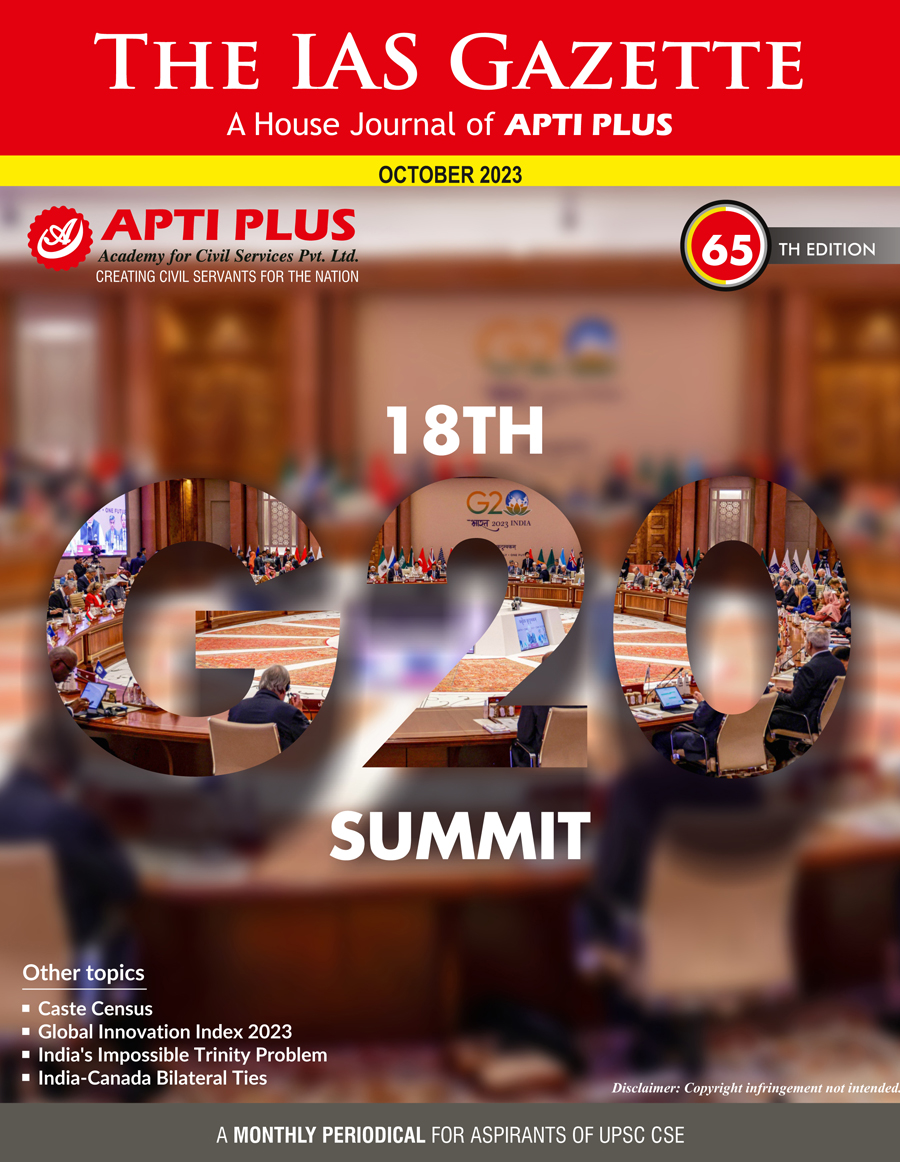
The air quality index (AQI)
Context
- The air quality index (AQI) in the national capital turned into the ‘severe' category again today morning, after it marginally improved to the 'very poor' category.
Details
- According to the Central Pollution Control Board (CPCB), the AQI level at 7 m. in Anand Vihar was recorded at 452, in RK Puram at 433, in Punjabi Bagh at 460, and in ITO at 413.
- As per CPCB the average Air Quality Index (AQI) in Delhi Yesterday stood at 395 which is a 'very poor category'.
- The Supreme Court yesterday directed the state governments of Punjab, Haryana, Uttar Pradesh, and Rajasthan to ensure crop residue burning was stopped and said it cannot let people die due to pollution.
- Meanwhile, Noida and Ghaziabad district administrations suspended physical classes in schools, as the air quality index in the national capital region continues to deteriorate.
The air quality index (AQI):
|
About
|
- The Air Quality Index (AQI) is a numerical scale that communicates the quality of air in a specific location.
- It is a standardized way to convey how clean or polluted the air currently is and what associated health effects might be of concern for the general population.
|
|
Components of AQI
|
- Particulate Matter (PM10 and PM2.5): Tiny particles suspended in the air, which can penetrate the respiratory system.
- Ground-level Ozone (O3): A major component of smog, formed by the reaction of pollutants in the presence of sunlight.
- Nitrogen Dioxide (NO2): A gas produced by combustion processes, particularly in vehicles and industrial facilities.
- Sulfur Dioxide (SO2): Emitted from burning fossil fuels containing sulfur, like coal and oil.
- Carbon Monoxide (CO): A colorless, odorless gas produced by incomplete combustion of carbon-containing fuels.
|
|
AQI Scale
|
- The AQI scale typically ranges from 0 to 500, with higher values indicating poorer air quality.
- The scale is divided into different color-coded categories, each corresponding to a different level of health concern.
- 0-50: Good
- 51-100: Moderate
- 101-150: Unhealthy for sensitive groups
- 151-200: Unhealthy
- 201-300: Very unhealthy
- 301-500: Hazardous
|
https://newsonair.gov.in/News?title=AQI-in-national-capital-turns-into-%e2%80%98severe%26%2339%3b-category&id=470920
.jpg)
Fifth India-US 2 plus 2 Ministerial Dialogue
Context
- The fifth India-US 2 plus 2 Ministerial Dialogue will be held in New Delhi on Friday.
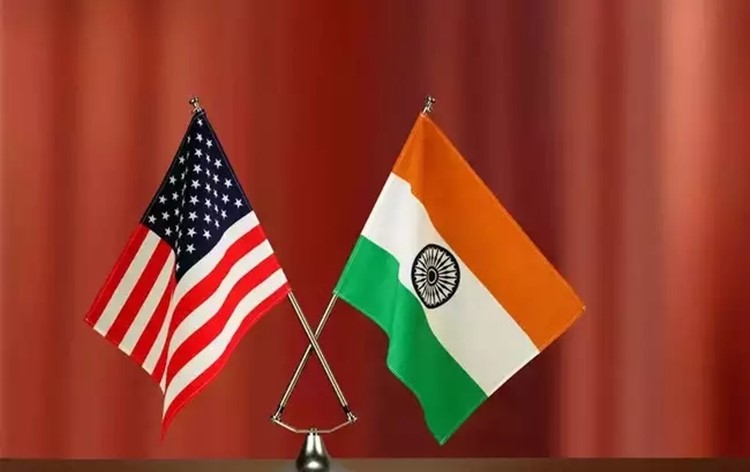
Disclaimer: Copyright infringement is not intended
Details:
- Raksha Mantri Rajnath Singh and External Affairs Minister Dr. S. Jaishankar will welcome US Secretary of State Antony Blinken and Secretary of Defence Lloyd Austin III for the Dialogue.
| The 2 plus 2 will enable a high-level review of the progress being made in cross-cutting aspects of defense and security cooperation, technology value chain collaborations, and people-to-people ties. |
- The External Affairs Ministry said in a statement that the Ministers will take the opportunity to take forward the futuristic roadmap for the India-US partnership as envisioned by Prime Minister Narendra Modi and US President Joe Biden, in their discussions in June and September this year.
2+2 Dialogue mechanism:
- The ‘two plus two dialogue’ is an expression used to indicate that two appointed ministers from each country, (ministers of defence and external affairs in India’s case) will meet up to discuss the two countries’ strategic and security interests.
- Goal: To establish a diplomatic conversation between the two countries.
- India conducted a 2+2 dialogue with, Japan and Australia.
Several such dialogue mechanisms are held at the Ministerial level including:
- India-U.S. Commercial Dialogue: The India-U.S. Commercial Dialogue is led by the Minister of Commerce and Industry (CIM) and the U.S. Secretary of Commerce.
- India – U.S. Economic and Financial Partnership: The India – U.S. Economic and Financial Partnership is led by the Finance Minister (FM) and the U.S. Secretary of the Treasury.
- India-U.S. Trade Policy Forum: The India-U.S. Trade Policy Forum is led by CIM and the U.S. Trade Representative (USTR).
- India-U.S. Strategic Energy Partnership: The India-U.S. Strategic Energy Partnership is led by the Minister of Petroleum and Natural Gas and the U.S. Secretary of Energy.
- India-U.S. Homeland Security Dialogue (HSD): The India-U.S. Homeland Security Dialogue is led by the Minister of Home Affairs and the Secretary of, the U.S. Department of Homeland Security
https://newsonair.gov.in/News?title=Fifth-India-US-2-plus-2-Ministerial-Dialogue-to-be-held-in-New-Delhi&id=470949

Women for Water, Water for Women campaign
Context
- Women for Water, Water for Women campaign commenced yesterday under the scheme Atal Mission for Rejuvenation and Urban Transformation (AMRUT).
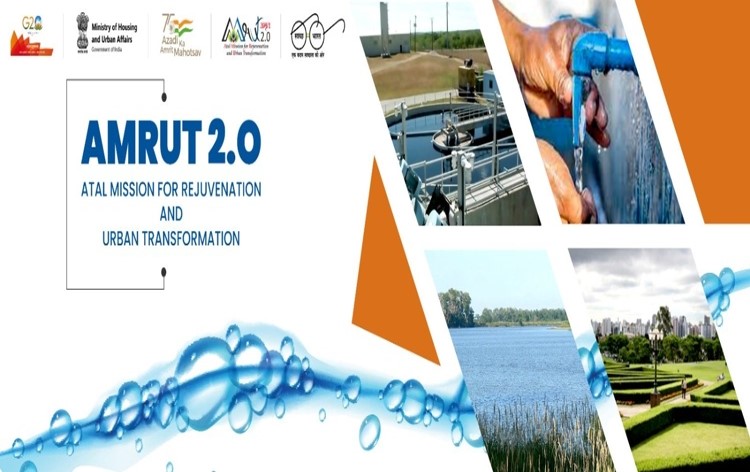
Details:
- The campaign will continue till tomorrow which is aimed to provide a platform for inclusion of women in water governance.
- Under the campaign, women will be given first-hand knowledge about water treatment processes through visits to Water Treatment Plants in their respective cities.
About the Campaign:
- This campaign is an initiative of the Ministry of Housing and Urban Affairs in partnership with the National Urban Livelihood Mission and Odisha Urban Academy.
- Enthusiastic participation marked the first day of the campaign as more than four thousand women from across all states.
- According to the Ministry of Housing and Urban Affairs, India has more than three thousand water treatment plants. During the campaign, women Self Help Groups will visit more than 550 water treatment plants, with a combined operational capacity of more than 20 thousand Minimal Liquid Discharge.
- Women play a significant role in household water management. By empowering women with knowledge about water treatment processes and infrastructure, the Ministry aims to enhance their ability to ensure access to safe and clean drinking water for their households.
About the Atal Mission for Rejuvenation and Urban Transformation (AMRUT):
AMRUT 2.0
- AMRUT 2.0 was launched in October 2021 for a period of 5 years, i.e., Financial Year 2021-22 to 2025-26.
- It is an extension of the AMRUT mission, which was launched in June 2015 and aims to provide every household with access to a tap with a guaranteed supply of water and a sewer connection.
- The Ministry of Housing and Urban Affairs (MoHUA) is the nodal ministry for the scheme.
https://newsonair.gov.in/News?title=Women-for-Water%2c-Water-for-Women-campaign-commences-under-scheme-Atal-Mission-for-Rejuvenation-and-Urban-Transformation-(AMRUT)&id=470947

Indian Technical and Economic Cooperation Day
Context
- Indian Technical and Economic Cooperation (ITEC) Day is celebrated in Dhaka on Tuesday.
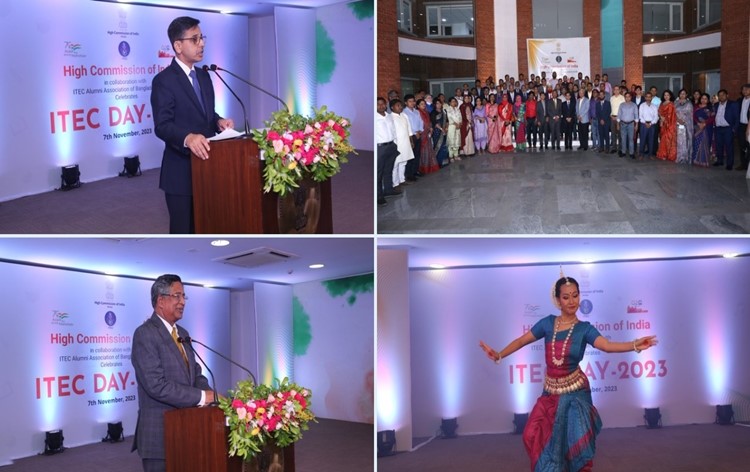
Details:
- The High Commission of India in Dhaka organized a function in collaboration with the ITEC Alumni Association of Bangladesh (IAAB), to celebrate ITEC Day.
- Bangladesh's Agriculture Minister Dr. Muhammad Abdur Razzaquegraced the occasion as the Chief Guest.
- Addressing the event, High Commissioner Pranay Verma said that as one of India’s closest development partners, Bangladesh occupies an important place in the ITEC program.
- He noted that Bangladesh is a recipient of 500 dedicated slots for ITEC every year under the Suborno Jayanti Scholarships.
About the Indian Technical and Economic Cooperation:
- ITEC, a flagship program of the Government of India, was instituted in 1964 as part of India’s Development Assistance Programme.
- It has been offering the benefit of India’s development experience and technological progress to more than 160 countries across the globe.
- Every year, more than 10,000 training slots are offered to ITEC partner countries for training courses in premier Indian Institutes in various areas like Agriculture, Accounts, Audit, Good Governance Practices, Management, Small and Medium Enterprises, Rural Development, Public Health, Parliamentary Affairs, Judiciary, Election Management, IT, Data Analytics, Remote Sensing, Renewable Energy, etc.
- To date, more than 5,000 young Bangladeshi professionals have undergone such courses in India under the ITEC programs.
- Around 180 ITEC alumni from all walks of life, besides distinguished guests, attended the event. Some of the distinguished ITEC alumni also shared their training experiences with the audience. A small cultural event culminated in the program.
https://newsonair.gov.in/News?title=Indian-Technical-and-Economic-Cooperation-Day-celebrated-in-Dhaka&id=470944







